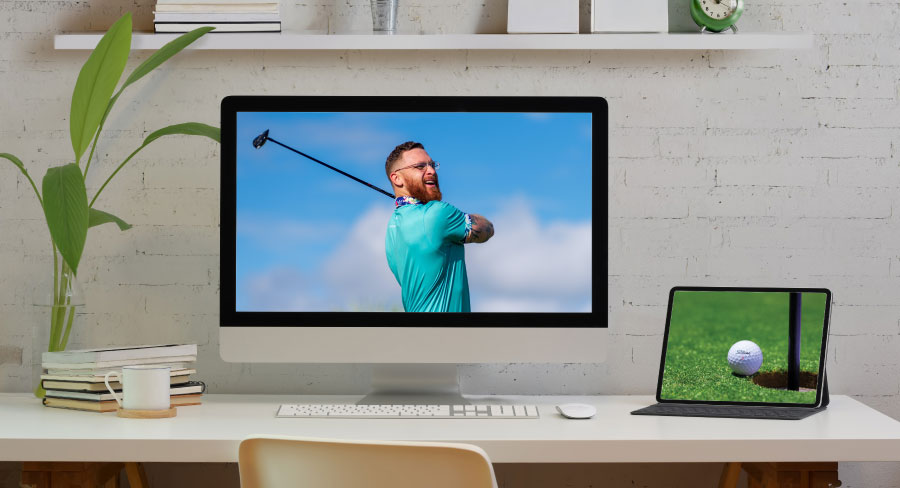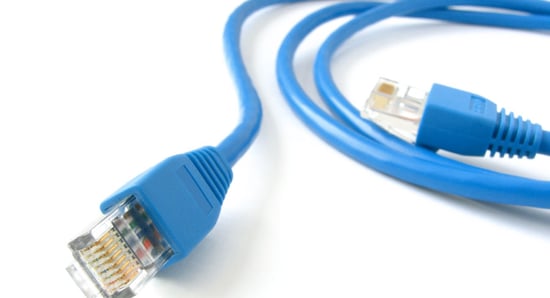
Guest Blog by Jordan Fuller (byline at end of article)
For the most part, coaches and students have always regarded online learning as inferior, or a poor man’s version of actually getting the “real deal” when it comes to sports lessons. When providing lessons over an online platform, the intent is not necessarily to find a better way to learn. With the accessibility of online lessons, it gives an instructor the ability to reach more students. Online lessons also help an instructor potentially assist thousands of players looking to improve their game, whatever the sport may be.
When considering taking up some online lessons, it’s very important to make sure you don’t have a slow or glitchy internet connection to make sure your lessons run smoothly. While working on how to line up your putts on your practice green in your family room, you don’t want the video freezing up midway through and leaving you wondering what you need to do next to drain those 10-footers.
There are some things you can do to make sure you have a seamless connection, and you don’t need to be overly tech-savvy to get it done. Here are several steps you can take.
Use an Ethernet Cord rather than Wi-Fi

While the default for most connections anymore is to connect wirelessly, by using an ethernet cord instead of Wi-Fi you can boost streaming quality. The wired connection provides a more stable signal and is always faster than over the air. Be sure to check the cable’s signal transmission rate as not all are the same. Also, check to be certain your device as an ethernet plug-in.
Test your Speed
After you’ve figured out how to connect to the internet, check your speed and whether you’re on Wi-Fi or wired with an ethernet cable. You can also go to one of the several internet speed check websites and follow the instructions.
There are two numbers to focus on - download and upload speed. The download speed will help you to determine how fast your device will receive data from the websites you’re accessing, while the upload speed will tell you how fast your device sends the information to the sites. These are given in Megabytes/Second (Mbps), with a typical one-on-one video call requiring about 1.2Mbps for a solid connection, while 3Mbps is considered good for group calls with data per the Zoom website requirements. Bear in mind these are minimums, and some lessons and websites may require upwards of 10Mbps to have a successful session.
On Wi-Fi, Move Closer
If you’ve chosen to stay on Wi-Fi, try to get closer to the router as long as it is in a nearby spot. The less the signal needs to travel through your house, and through any walls or barriers, the better the signal strength you’ll get on your device.
Can’t Get Closer, Get a Booster
If you’re not able to move closer to your router, there are many quality Wi-Fi boosters, or range extenders, available on the market that will help to extend your network coverage beyond that of a traditional router’s signal range. Many of these simply plug into an outlet in the room you’re wanting to use and relay the signal from the base router, boosting the speed into the room it’s in.
Close Unused Apps
When streaming a signal to your computer or device, it’s a good idea to close any and all applications that you aren’t using. Even though the apps aren’t currently being used, they can drain the data flowing into your device. Apps can also take up memory speed, slowing down the application or website you’re wanting to use.
Get the Rest of the House Offline
If you have a houseful of gamers or others that are streaming video or movies while you’re trying to go through your lesson, they will be draining bandwidth from the other devices on the network. If possible, see if you can disconnect as many devices from the internet while you’re completing your lesson. Additional devices, as well as your lesson, will be taking up the available signal.
So there you have it! With just a few tweaks, you’ll be done streaming your favorite golf lesson and ready to toss the bag in the trunk to head to the course.
Upgrade to the fast lane with Viaero’s unlimited high-speed internet.
Author Byline: Jordan Fuller is a retired golfer, and now, he is mentoring and coaching golf online. Jordan also owns a golf publication site, https://www.golfinfluence.com, where he shares some tips and tricks on how to play golf and improve the game.

